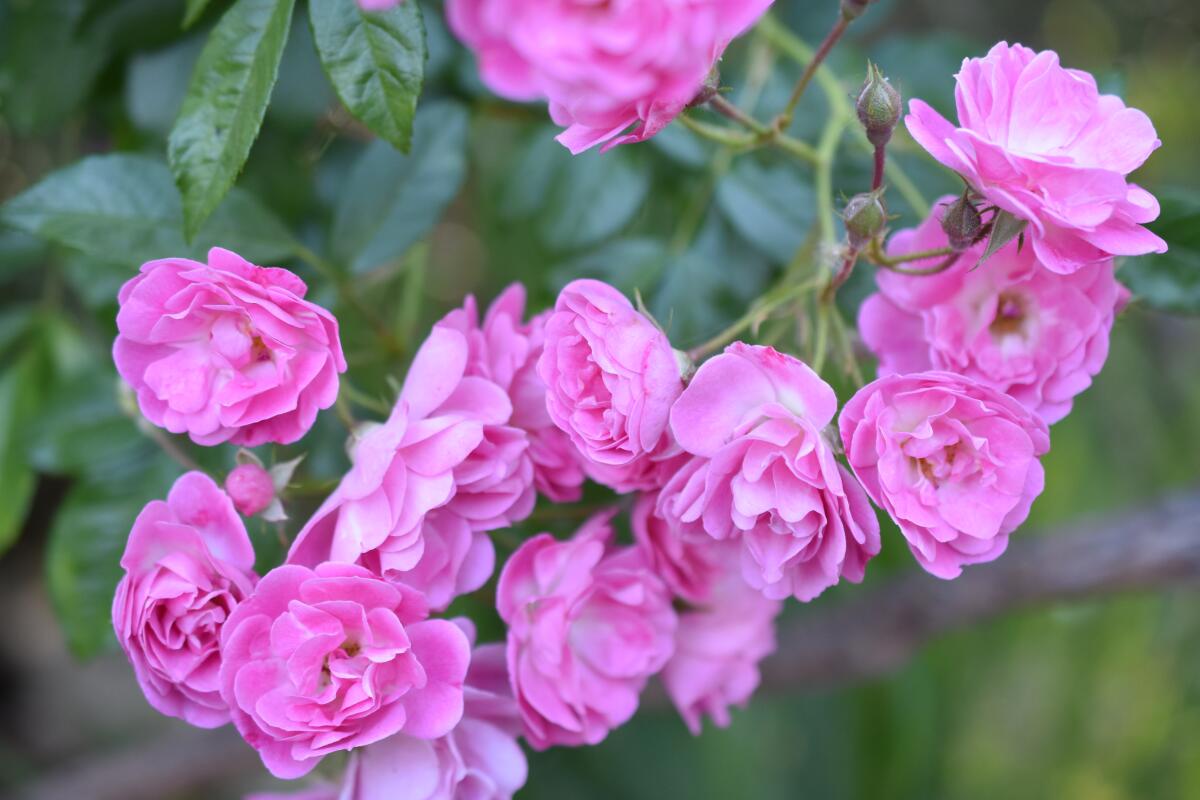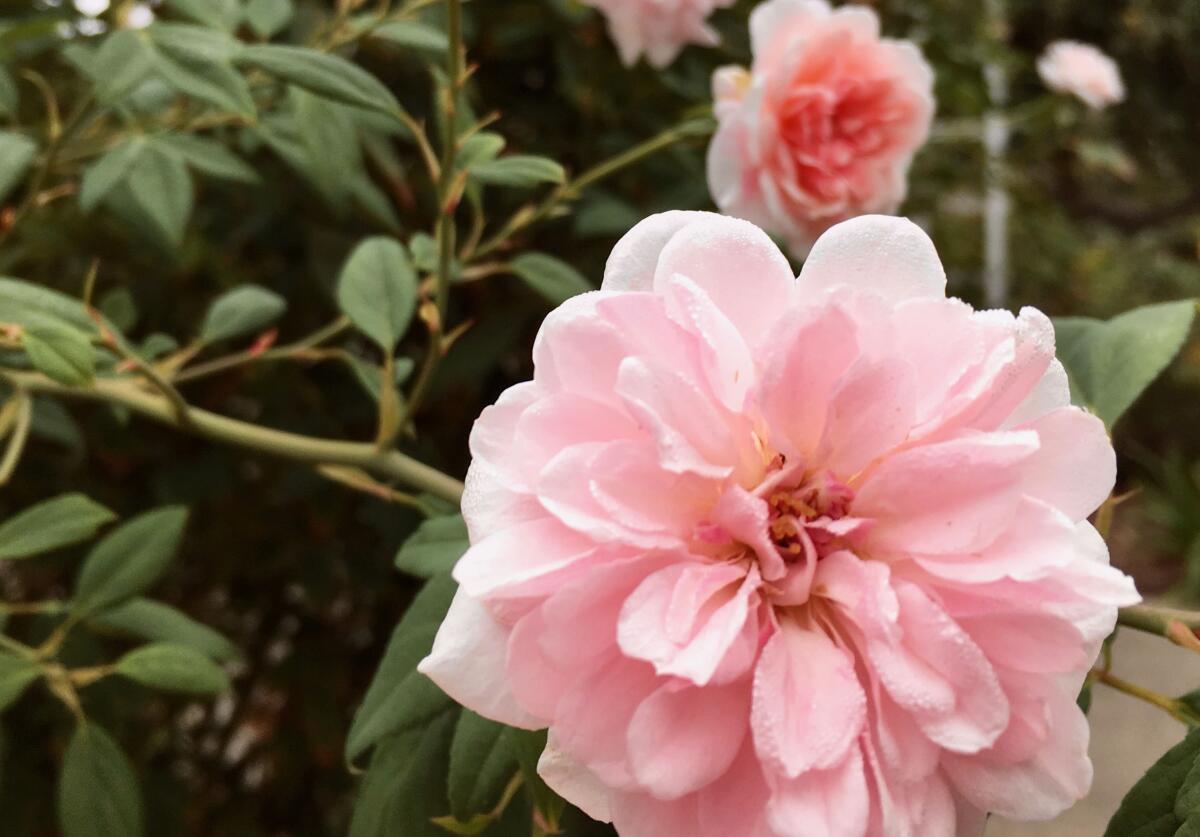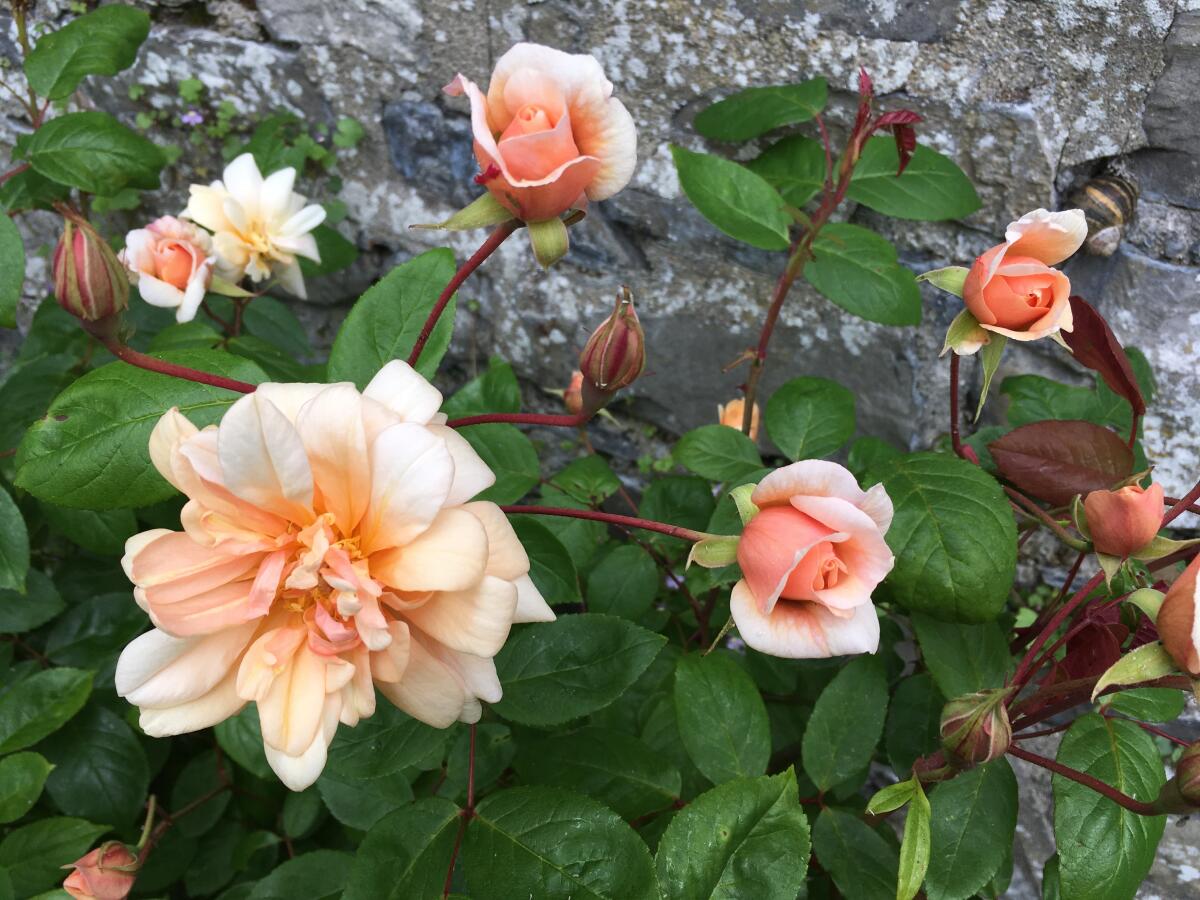Polyantha roses are prolific bloomers and rugged survivors

Some varieties have been thriving for more than a century
Glance through a rose catalog or walk through a nursery, and you will see many hybrid teas, floribundas and shrub roses. The polyantha roses should be just as popular. They have many of the virtues we look for in a good garden rose and include some beautiful varieties that have survived for more than a hundred years.
Polyanthas are generally very generous with their blooms, which normally grow in big clusters of dainty, diminutive flowers on small to medium-size shrubs. These roses are ideal for containers, as border plants, along walkways, and also as shrubs in the garden. There are also a few varieties that are relatively large, making this a very versatile class of roses. Some varieties have few to no prickles on the stems, and some are fragrant. In addition, polyantha roses are usually rugged and vigorous and have good resistance to pests and disease.
The first polyantha rose, Pâquerette, was introduced in 1875 by Jean-Baptiste Guillot, who made the cross between R. multiflora and R. chinensis, both species of roses native to east Asia. The hybridizer decided to call his new hybrid polypoms because of the flower clusters that resembled pom-poms. Today they are known as polyanthas, which is the Greek term meaning many flowers.
These roses became very popular because they were remontant (repeat blooming). Polyanthas are actually the ancestors of floribunda roses. When hybridizers made crosses between polyantha and hybrid tea roses, the resulting larger roses were named hybrid polyanthas, but this name was subsequently changed to floribundas.
Earth-Kind is a special designation given to select rose cultivars that have undergone extensive research and field trials by the Texas AgriLife Extension Service. Their selected roses demonstrate superior pest tolerance combined with outstanding landscape performance. Several polyantha roses, The Fairy, Mlle. Cécile Brünner, La Marne, Perle d’Or, Climbing Pinkie and Marie Daly have been given this prestigious designation.
The Fairy was introduced in 1932. It is one of the most highly rated, popular and widely grown roses in the world today. This compact polyantha rose has tiny leaves and small double light pink pom-pom flowers, and it blooms nearly continuously throughout the growing season.

Many people know and love Mlle. Cécile Brünner, also known as the Sweetheart Rose. This charming rose, introduced in 1881, is often grown as a climber, but there is also a smaller shrub version. It is remontant and disease resistant, and its pink pointed buds open to double, miniature rosettes that have a spicy fragrance.
La Marne, introduced in 1915, is a vigorous and almost thornless bush which seems constantly in flower with unique pink blooms blushed with white.

Bred in France, very fragrant apricot Perle d’Or is a highly regarded old garden rose that can grow to 6 feet tall. It blooms from spring until fall, replacing spent flowers quickly with new flushes of bloom. It is also suitable for a large container on a deck or patio or along a walkway where its fragrance and flowers can be enjoyed up close. Perle d’Or is very resistant to blackspot, mildew and rust, and was selected as the 2007 “Earth-Kind Rose of the Year” by the Texas AgriLife Extension Service.
Having very few thorns makes medium-pink Climbing Pinkie the perfect rose to train on columns, trellises and arbors. It can grow to 10 feet and is beautiful cascading down a rock retaining wall or along the top of a rail fence. It can even be grown trailing down a steep incline, as a large mounding shrub.
Three-foot-tall Marie Daly is a delightful polyantha covered with very fragrant, semi-double pink flowers that can turn almost white during periods of intense heat. It blooms spring through fall and is well mannered with a graceful rounded form, and it is resistant to spider mites. Marie Daly has few thorns, making it wonderful for high traffic areas and places where children may play.
The following roses are also very highly rated in the American Rose Society Handbook for Selecting Roses Handbook.
China Doll, introduced in 1946, is a vigorous spreading polyantha that produces large flushes of china-rose pink pom-pom blooms. This rose also comes in a beautiful weeping form if you are lucky enough to find it.
One whiff of the cluster of small, dark pink blooms of the 1909 old garden rose Excellenz von Schubert is all it took for me to know that this was a rose I had to have.
Also very fragrant is Marie Pavié, a moderate-sized bush with white, loose, pom-pom blooms that was introduced in 1888.
Many exhibitors love Lullaby for its small clusters of perfectly formed white pom-pom blooms with a green pip in the center. But this 1953 rose is not just a pretty face. It is a 4-foot vigorous bush with disease-resistant foliage.
Verdun, a 1918 introduction, has clusters of small pom-pom crimson-purple blooms, and is an outstanding compact garden rose.
A recent 2007 rose, Wing-Ding, is a superb polyantha that produces large clusters of bright red blooms on an upright bush.
There is one drawback to this wonderful group of floriferous plants. Some of the older roses that I have hopefully enticed you into wanting may be hard to find. Look for them online. I have had success at Regan Nursery, Antique Rose Emporium, Heirloom Nursery, Rogue Valley Roses and Burlington Rose Nursery.
Like so many other worthwhile treasures, the search is worth it.
Perwich is a member of the San Diego Rose Society, a Consulting Rosarian and a Master Gardener with UC Cooperative Extension.
Get U-T Arts & Culture on Thursdays
A San Diego insider’s look at what talented artists are bringing to the stage, screen, galleries and more.
You may occasionally receive promotional content from the San Diego Union-Tribune.





